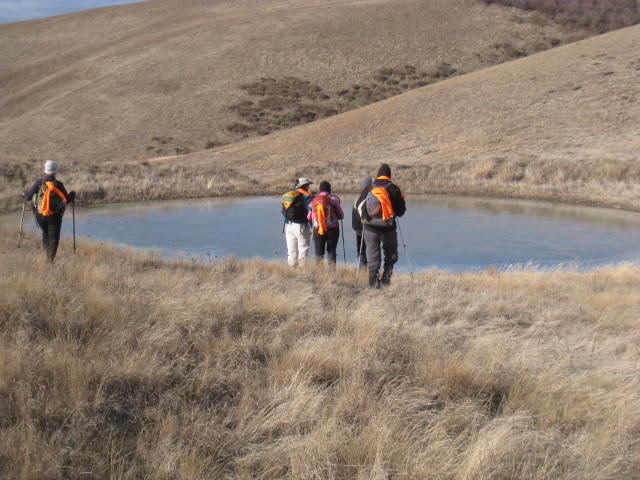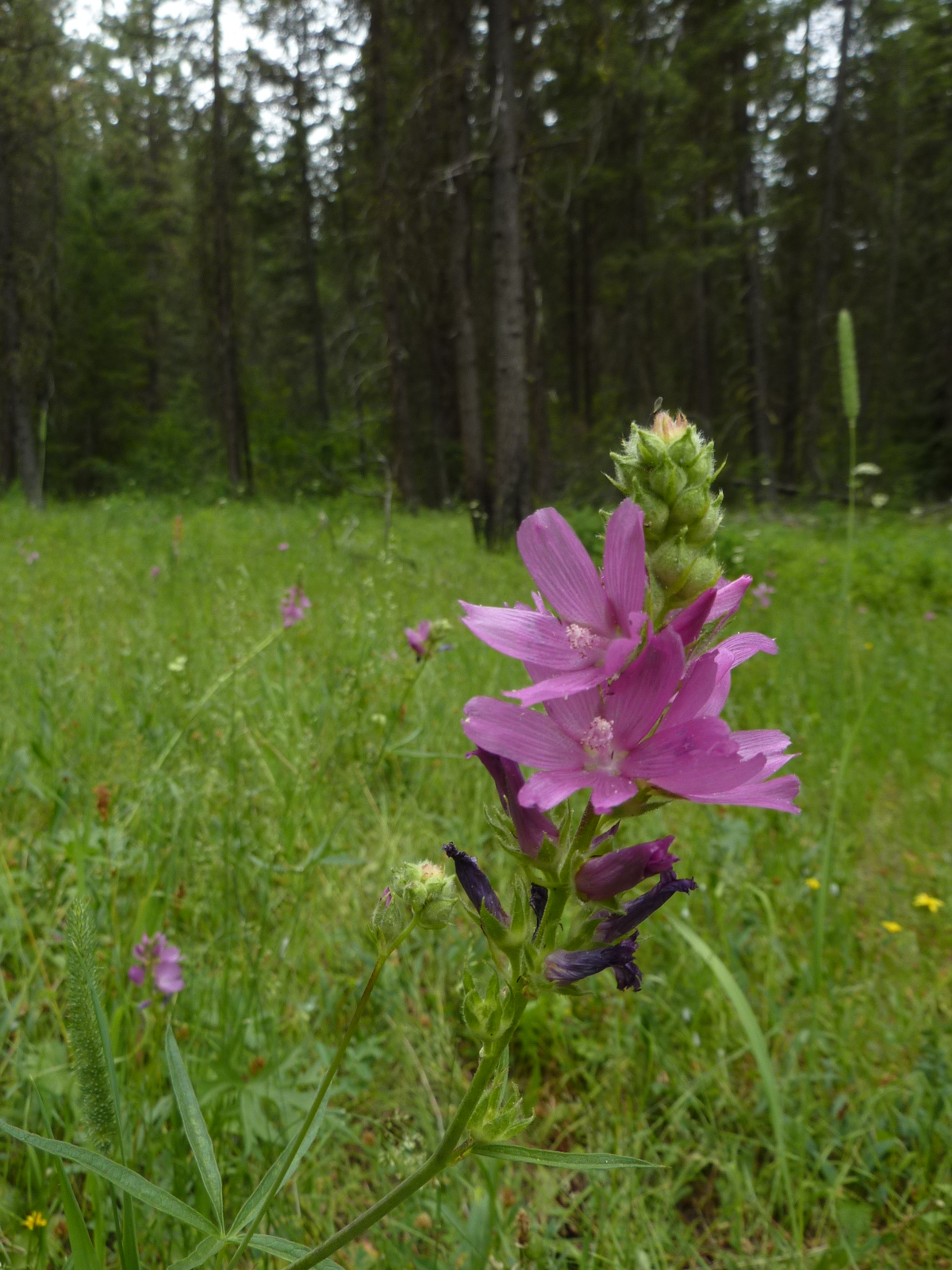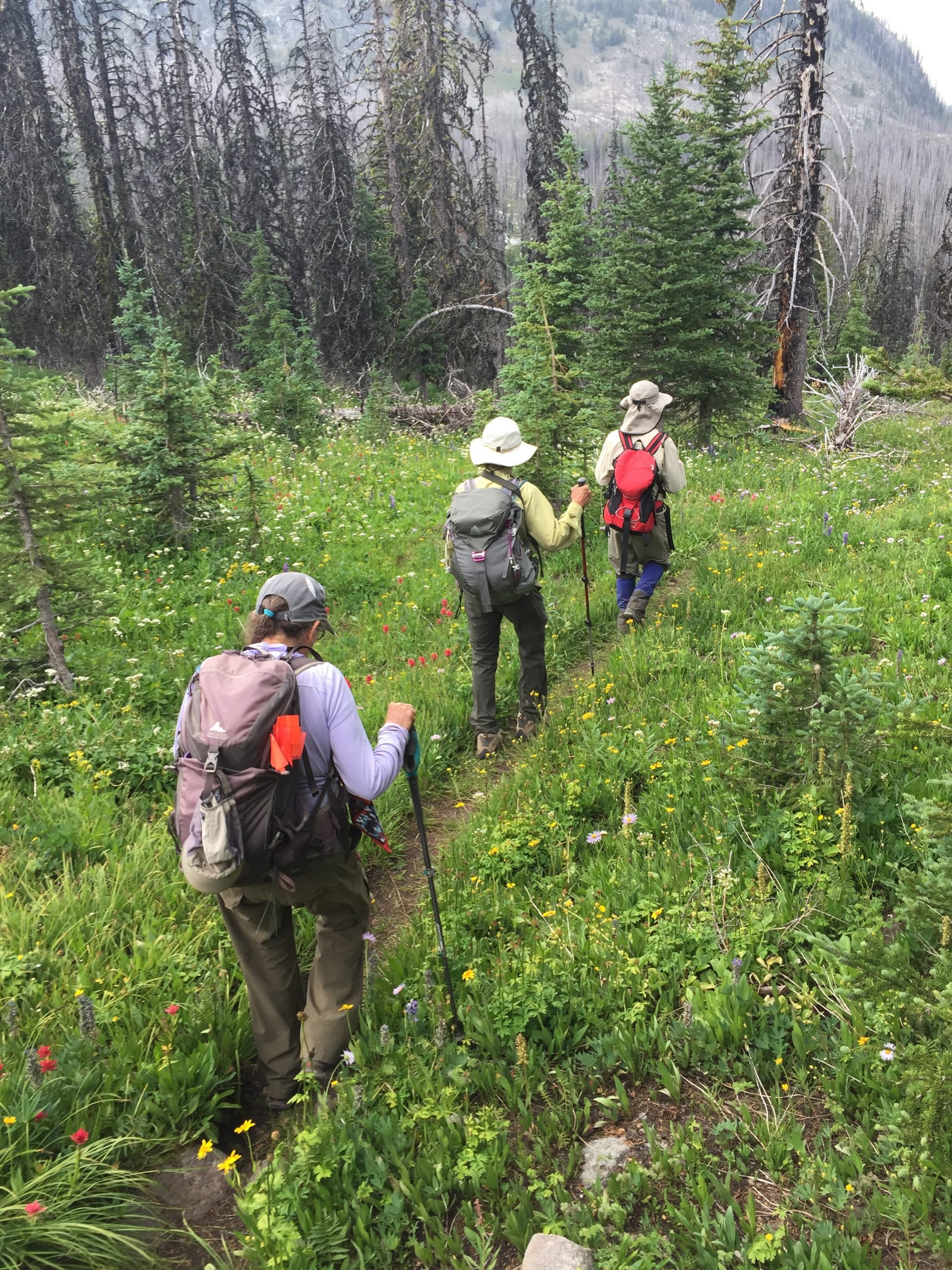Wandering Washington with Rare Care Volunteers
This July, the Tiffany Springs Campground in the Okanogan National Forest was briefly invaded by volunteer botanists. The 18 volunteers were gathered for the annual Monitoring Weekend event held by the University of Washington Botanic Gardens’ Rare Plant Care and Conservation (Rare Care) program. Each year a location with many historical records of rare plants that have not recently been visited is chosen for the volunteer crews to put their skills to work. Over the three days of this year’s event, the volunteers completed 35 reports for historical locations on 9 different species – making it the most productive Monitoring Weekend on record!
The event demonstrates the hard work and dedication of the volunteer citizen scientists which help power Rare Care. The volunteers are passionate about the natural world and plant conservation, and eager to help. The program recruits for three types of volunteer work: rare plant monitoring, seed collecting, and seed cleaning. But the bulk of the volunteer efforts go towards the monitoring efforts, with over 100 volunteers willing to navigate across remote areas of public – and sometimes private – lands, climb up cliffs, wade through head-high nettles, and brave the elements in search of rare plants. Though the volunteers are provided with training, including orienteering, the volunteers work on their own. Rare Care staff provide them any historical data and maps, but it is their responsibility to research the plant ahead of their trip, be able to correctly identify it from possible look-a-likes in the area, research how to best reach their site, and then of course take all the monitoring data.
The data volunteers collect are then shared with the Washington Natural Heritage Program to update inventories on rare plant populations across the state, and will be used for land management decisions and conservation planning. Rare plant monitors perform one of the critical first steps of conservation by visiting known populations of rare plants, collecting data on the population, and reporting any threats observed during the visit. In many cases these sites haven’t been visited in over a decade or more.
For some species of interest, monitoring may be more frequent than others. A couple of ongoing Rare Care monitoring projects with various partners are centered around species that area also in the CPC National Collection: Wenatchee Mountain checkermallow (Sidalcea oregana var. calva) and Whited’s milk-vetch (Astragalus sinuatus). Both these species are endemic to the Wenatchee region and face various threats, from development to changes in fire regimes.
Wenatchee Mountain checkermallow is a perennial herb with beautiful pink inflorescences. Federally listed as endangered, the species occurs in only five locations. Partnering with the Department of Natural Resources, each year Rare Care volunteers count individual plants and map populations in order to study population trends over time.
Whited’s milk-vetch known from only eight populations scattered along only a couple of drainages. Rare Care volunteers have been working with the Bureau of Land Management (BLM) to monitor the largest of these populations through annual counts of individual plants in permanent transects and tracking the different life stages to better understand recruitment and mortality. Back at the University of Washington Botanic Gardens, seeds have been propagated for outplantings with the BLM.
Since it began in 2001, Rare Care volunteers have monitored over 330 species of plants, mosses, and lichens listed as endangered, threatened, or sensitive by the natural heritage program. And monitoring really does matter: the data collected by volunteers on the Washington state endemic grey cryptantha (Cryptantha leucophaea) led to a change in status from sensitive to threatened and brought much needed attention to the conservation needs of the species. Volunteers revisited 33 of 46 sites, documenting a 75% population decrease at over 10 of the sites. Rare Care worked with the BLM to monitor known locations, survey for new ones, and, fortunately given the decline, to collect seed from various locations.
Rare Care staff make sure to recognize their volunteers in a number of ways throughout the year. At an annual appreciation event held toward the end of each summer, all UW Botanic Garden volunteers enjoy the gardens with food and drink, receiving awards, and sharing stories. Within Rare Care, volunteers are invited to annual forums in various locations around the state where experts are brought in to speak about various topics ranging from pollinator identification to navigation techniques. At these forums, a special volunteer is honored for their accomplishments with a gift and later featured in the bi-annual newsletter. But, as a passionate group, the volunteers keep at it because of the importance to conservation and the amazing work they do.
To learn more about Rare Care, and the volunteer opportunities they offer, check out their University of Washington Botanic Gardens’ site.




